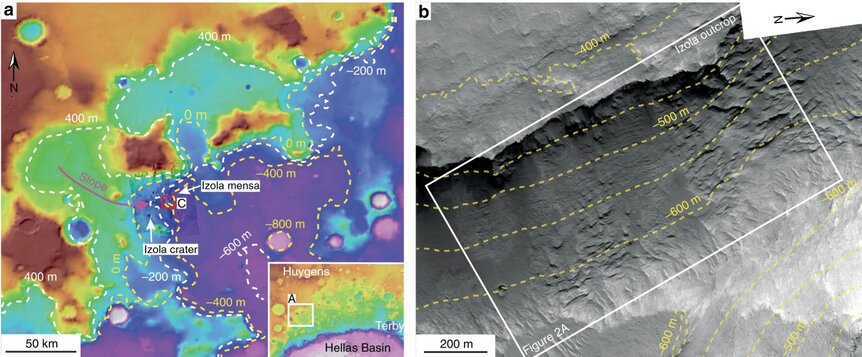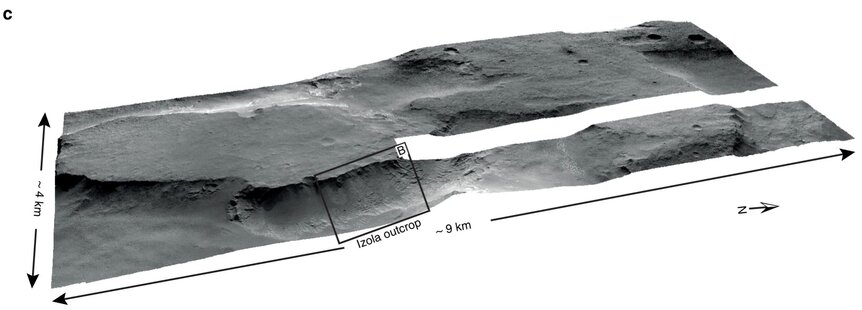Create a free profile to get unlimited access to exclusive videos, sweepstakes, and more!
Scientists reveal flowing new evidence of raging ancient rivers of water on Mars

While they probably wouldn't have been recommended to kayak or raft upon, Mars' ancient waterways are helping to redefine how we view our neighboring world, as an international research team has recently uncovered new clues to billion-year-old rivers that once flowed across the Red Planet's landscape. Their watery discoveries were recently published in the online scientific journal Nature Communications.
By analyzing a fresh crop of high-resolution images captured by the HiRISE camera installed on NASA’s Mars Reconnaissance Orbiter, scientists were able to transform shots into 3D topographical maps of the Martian area identified as Hellas Basin, one of the most massive impact craters in the solar system. What they found along a rocky mountain cliff face were deep sediment deposits about 656 feet high, created by rushing rivers, towering almost twice the height of the White Cliffs of Dover, and spanning nearly one mile wide.
“Unfortunately we don’t have the ability to climb, to look at the finer-scale details, but the striking similarities to sedimentary rocks on Earth leaves very little to the imagination,” lead study author Francesco Salese of the Netherlands' Utrecht University told New Scientist. “To form these 200-metre-thick deposits we needed conditions that would have required an environment capable of maintaining significant volumes of liquid water."
It's already been established over the years that Mars was once home to multiple lakes, rivers, and possibly even oceans that could have supported life on some primal level. Today, Mars is iced over at the poles and subject to intense dust storms, with no hint of liquid water existing on its surface. However, about the time period that life on Earth was starting to stir 3.7 billion years ago, Mars was much more temperate and might have provided just the right habitat for the formation of life.
"Here on Earth, sedimentary rocks have been used by geologists for generations to place constraints on what conditions were like on our planet millions or even billions of years ago," co-lead study author William McMahon tells phys.org. "Now we have the technology to extend this methodology to another terrestrial planet, Mars, which hosts an ancient sedimentary rock record that extends even further back in time than our own."
According to their findings, the raging rivers that carved out these rocks were most likely active for tens to hundreds of thousands of years. These ancient sediment beds could hold the promise of life and provide more answers surrounding Mars' distant past, especially starting in 2023, when the European Space Agency (ESA) deploys its Rosalind Franklin ExoMars Rover to explore the Red Planet's mysterious terrain.





























